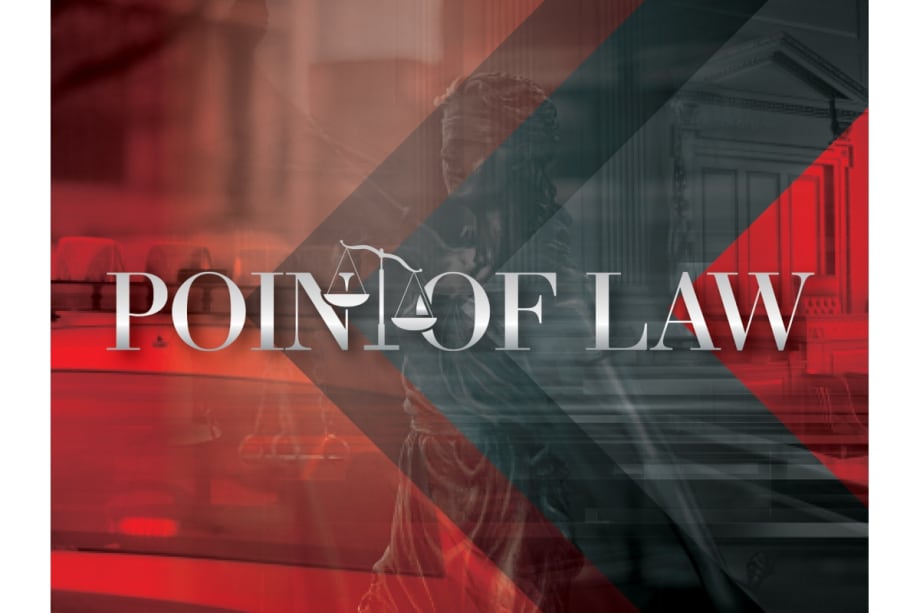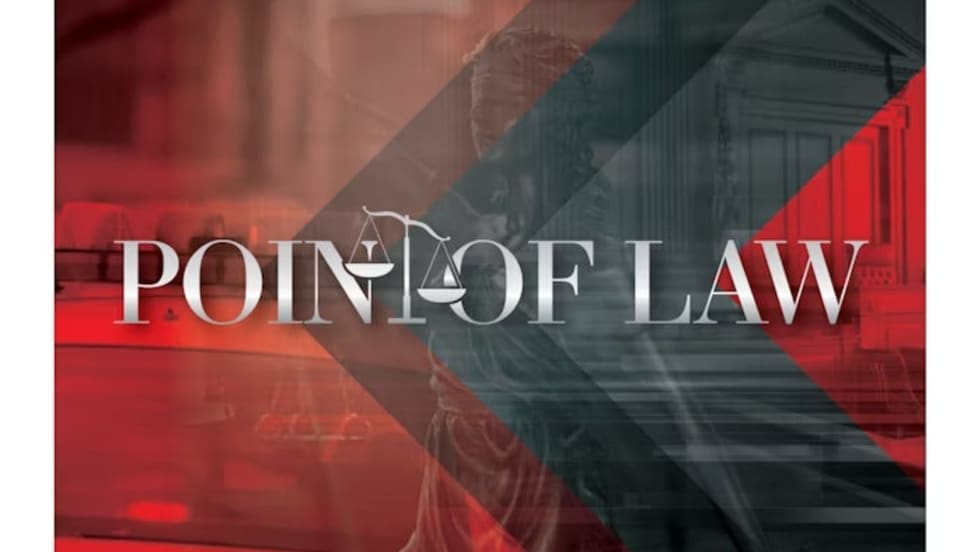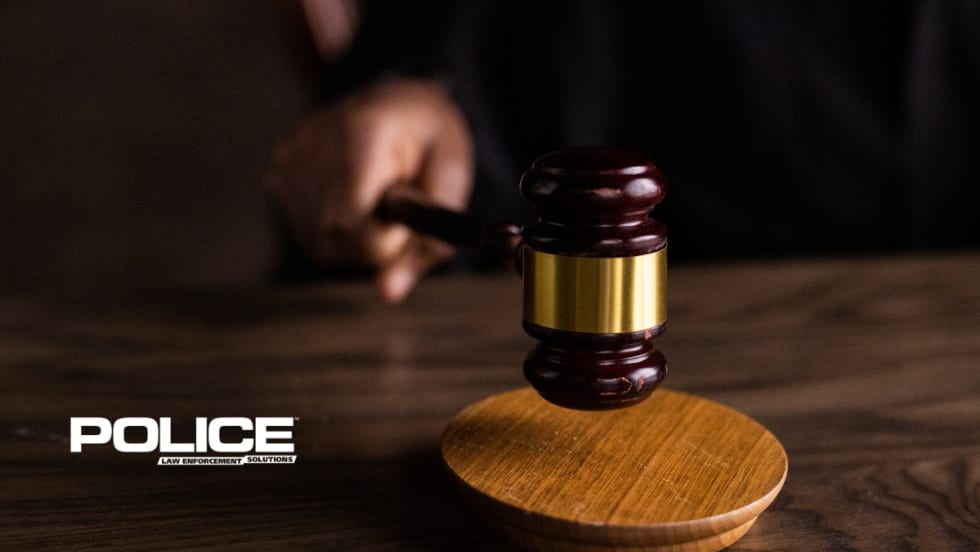The case that I’m going to discuss in this column is from the Sixth Circuit Court of Appeals. It involves a vehicle pursuit that ended in a suspect’s death from two gunshot wounds and a collision that occurred after he fled from an officer.
Point of Law: Fleeing Drivers and Use of Force
The Sixth Circuit Court of Appeals recently ruled on whether officers can use deadly force to stop a suspect from driving away in some circumstances.

To understand how the Sixth Circuit judges ruled in this case, we need to talk about a 2017 case, Latits v. Phillips.
In Latits, the court held that in evaluating the reasonableness of deadly force in the context of a fleeing driver, the court must determine: (1) whether anyone was in the car’s immediate path at the time of the shooting; and (2) examine the officer’s prior interactions with the driver that show potential for “imminent danger to other officers or members of the public in the area” if the driver is permitted to continue fleeing.
We will also discuss whether the officer was given qualified immunity. A police officer is entitled to qualified immunity unless the plaintiff establishes: (1) a constitutional violation; and (2) that the right at issue was clearly established when the incident occurred.
The Case
Around 6 p.m. on April 10, 2018, Officer Keith Bierenga attempted to stop a BMW driven by Antonio Gordon after Gordon almost collided with another vehicle. After failing to pull over for several blocks, Gordon stopped his car behind several other vehicles at a red light.
Officer Bierenga exited his police cruiser, approached Gordon’s car, and began speaking to him through the partially open driver’s-side window. During the 10-second conversation, Officer Bierenga perceived that Gordon was under the influence of something. When the light turned green and the traffic ahead of him moved forward, Gordon accelerated away from Officer Bierenga.
Officer Bierenga returned to his cruiser and followed Gordon as he made a sharp left turn in front of oncoming traffic into a White Castle parking lot. Gordon drove against the designated flow of traffic for the drive-thru window and went the wrong way around the parking lot. Officer Bierenga attempted to follow, but lost Gordon.
Approximately 15 minutes later, Officer Bierenga spotted a BMW in the line at the White Castle drive-thru window that looked like Gordon’s. It was, in fact, Gordon at the drive-thru window paying for his order. There was another vehicle parked in line approximately three feet behind Gordon. Officer Bierenga pulled into the parking lot and positioned the back of his cruiser at a diagonal angle directly in front of Gordon’s car, effectively blocking him in. Officer Bierenga exited his vehicle and walked toward Gordon’s car with his firearm drawn. Gordon backed his car into the vehicle behind him and then drove forward striking Officer Bierenga’s cruiser, seemingly in an attempt to make a three-point turn to get out of the drive-thru lane.
While standing to the side of Gordon’s car, Officer Bierenga repeatedly yelled at him to stop. As Gordon continued to maneuver his car, Officer Bierenga walked closer to Gordon’s driver’s-side window. After Gordon pulled forward, heading away from the White Castle and toward an opening behind Officer Bierenga’s cruiser, Officer Bierenga yelled, “Stop!” and fired four shots at Gordon through the driver’s side of the car. Gordon continued out of the parking lot and drove a short distance before he collided head-on with another vehicle. Gordon was subsequently transported to the hospital where he died.
Gordon suffered two gunshot wounds; one to his left arm and chest and another to his right arm. Gordon’s toxicology report indicated that he had a blood alcohol concentration of .27 at the time of his death.
Gordon’s Estate sued Officer Bierenga for excessive use of force under 42 U.S.C. § 1983 [Gordon v. Bierenga 2021 U.S. App. LEXIS 36867 (6th Cir. MI Dec. 14, 2021)]. The district court denied Officer Bierenga qualified immunity. The court held that Officer Bierenga’s use of deadly force violated Gordon’s Fourth Amendment right to be free from excessive force during his vehicular flight, and that this right was clearly established in Latits v. Phillips. Officer Bierenga appealed.
Sixth Circuit Opinion
In this case, the Sixth Circuit Court of Appeals held that the plaintiff failed to satisfy the second prong regarding qualified immunity. A right is clearly established when it is sufficiently clear that every reasonable officer would have understood that what he is doing violates that right. This analysis depends on the specific facts of the case at hand and their similarity to case law in existence at the time of the alleged violation.
The court held that here, like in Latits, the evidence allowed for an interpretation that Officer Bierenga fired four shots at Gordon after Gordon’s car had passed the point where it could harm him, such that Officer Bierenga had time to realize that there was no longer an immediate danger.
However, unlike Latits, which had a chase that occurred when the driver fled in the dead of night on a large, effectively empty highway surrounded by non-populated areas, the circumstances of Gordon’s flight were different.
First, Gordon fled from Officer Bierenga during rush hour in the middle of a major road in a populated Detroit suburb, adjacent to residential neighborhoods and businesses.
Second, Officer Bierenga saw Gordon make a reckless left turn in the face of oncoming traffic near a busy intersection to escape from him, causing oncoming cars to brake to avoid colliding with Gordon as he turned into the White Castle parking lot.
Third, several cars were parked in the parking lot and multiple patrons and employees were inside the establishment. Finally, after Officer Bierenga blocked Gordon at the drive-thru window, Gordon reversed into the occupied vehicle behind him before accelerating forward and hitting Officer Bierenga’s police vehicle.
The court concluded that, while Gordon’s contact with those vehicles occurred at a relatively low speed, his conduct showed a willingness to strike both police and civilian vehicles to effectuate his escape from police. Based on these facts, the court held that Gordon’s reckless driving posed a materially higher risk of harm to the surrounding public than the reckless driving in Latits. Accordingly, the court found that Latits did not “clearly establish” that using lethal force in the specific scenario Officer Bierenga confronted violated the Fourth Amendment.
Takeaways
Much like in use-of-force cases that don’t involve a vehicle, we see here that the court weighs public safety over Fourth Amendment Rights. If force is necessary to protect the public, especially if you have tried to de-escalate the situation prior to using that force, you will be entitled to qualified immunity.
In Gordon v. Bierenga, the officer tried to tell the driver to stop prior to using his weapon, and he also tried to simply block him in with his vehicle. Clearly this suspect was not going to stop.
Eric Daigle is founder of Daigle Law Group, LLC, a firm that specializes in law enforcement operations. A former Connecticut State Police officer, Daigle focuses on civil rights actions, including police misconduct litigation. He is a legal advisor for police agencies across the country and a member of the POLICE Advisory Board.
More Point of Law

How One Police Department Cut Crime by 46% with Smarter Patrol Management
Discover how one police department cut crime nearly in half using smarter patrol data. This whitepaper breaks down the real-world strategy behind a 46% drop in vehicle thefts, improved officer safety, and stronger community visibility.
Read More →
Point of Law: The Limits of Electronic Searches
Can an individual be prosecuted for despicable criminal conduct based on evidence obtained in violation of the United States Constitution? Ultimately, the Ninth Circuit judges wrote, “In the circumstances of this case (United States v. Holcomb, 23-469 (9th Cir. 2025)), respect for the Constitution and the rule of law requires an answer of “no.”
Read More →
Trump Issues Order Cutting Federal Funding in Cashless Bail Jurisdictions
<strong>“</strong>Cashless bail policies allow dangerous individuals to immediately return to the streets and further endanger law-abiding, hard-working Americans because they know our laws will not be enforced,” the administration said.
Read More →
Justice Department Sues Los Angeles Over Sanctuary Policies
The DOJ said in a press release that the “sanctuary city” policies of the City of Los Angeles are illegal under federal law.
Read More →
Understanding Officer-Created Jeopardy
Officers can be criminally prosecuted for using force when their actions led to escalation during contact with subjects.
Read More →
Point of Law: The Limitations of Search Warrants
In the Tenth Circuit case of Cuervo v. Sorenson, the Court ruled officers cannot deviate from the language of the warrant.
Read More →
DOJ Dismisses Consent Decrees Affecting Louisville and Minneapolis Police
The Civil Rights Division will be taking all necessary steps to dismiss the Louisville and Minneapolis lawsuits with prejudice, to close the underlying investigations into the Louisville and Minneapolis police departments.
Read More →
New Michigan Bill would Give Officers Civil Immunity in Self-Defense Cases
House Bill 4404 would create a presumption of civil immunity for individuals who are cleared criminally after using force in self-defense, shifting the burden of proof onto plaintiffs.
Read More →
Seattle to Pay Police Captain $1 Million to Settle Lawsuit
Seattle police Capt. Eric Greening sued former Chief Adrian Diaz last year alleging that Diaz retaliated when Greening brought up concerns about racial and gender discrimination.
Read More →
Washington Agencies Ordered to Not Delete Critical Facebook Contents
Jim Leighty, a local activist, filed two federal lawsuits last year claiming both agencies deleted or hid critical comments he had written below multiple posts, while keeping comments that were pro-police in nature.
Read More →
